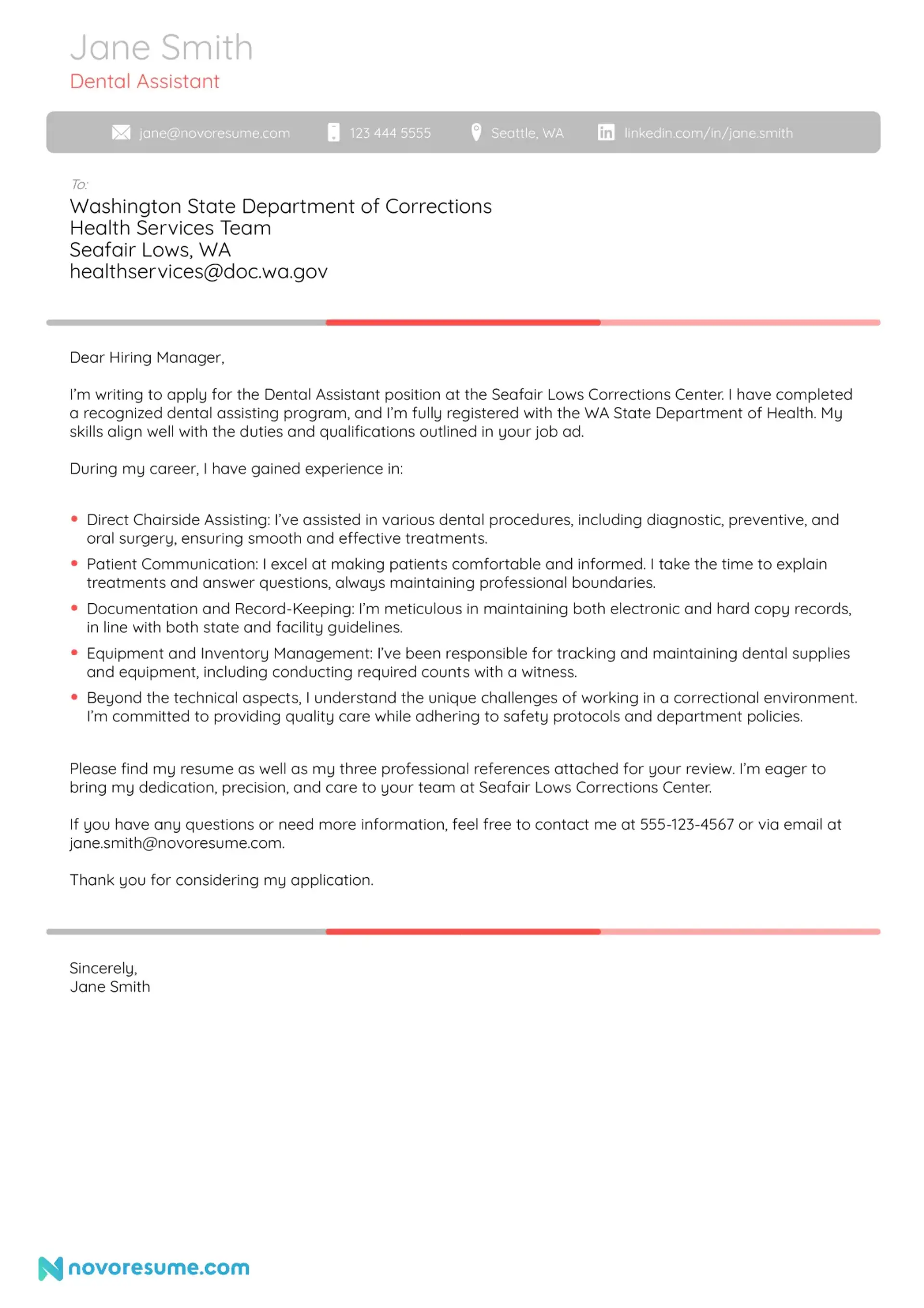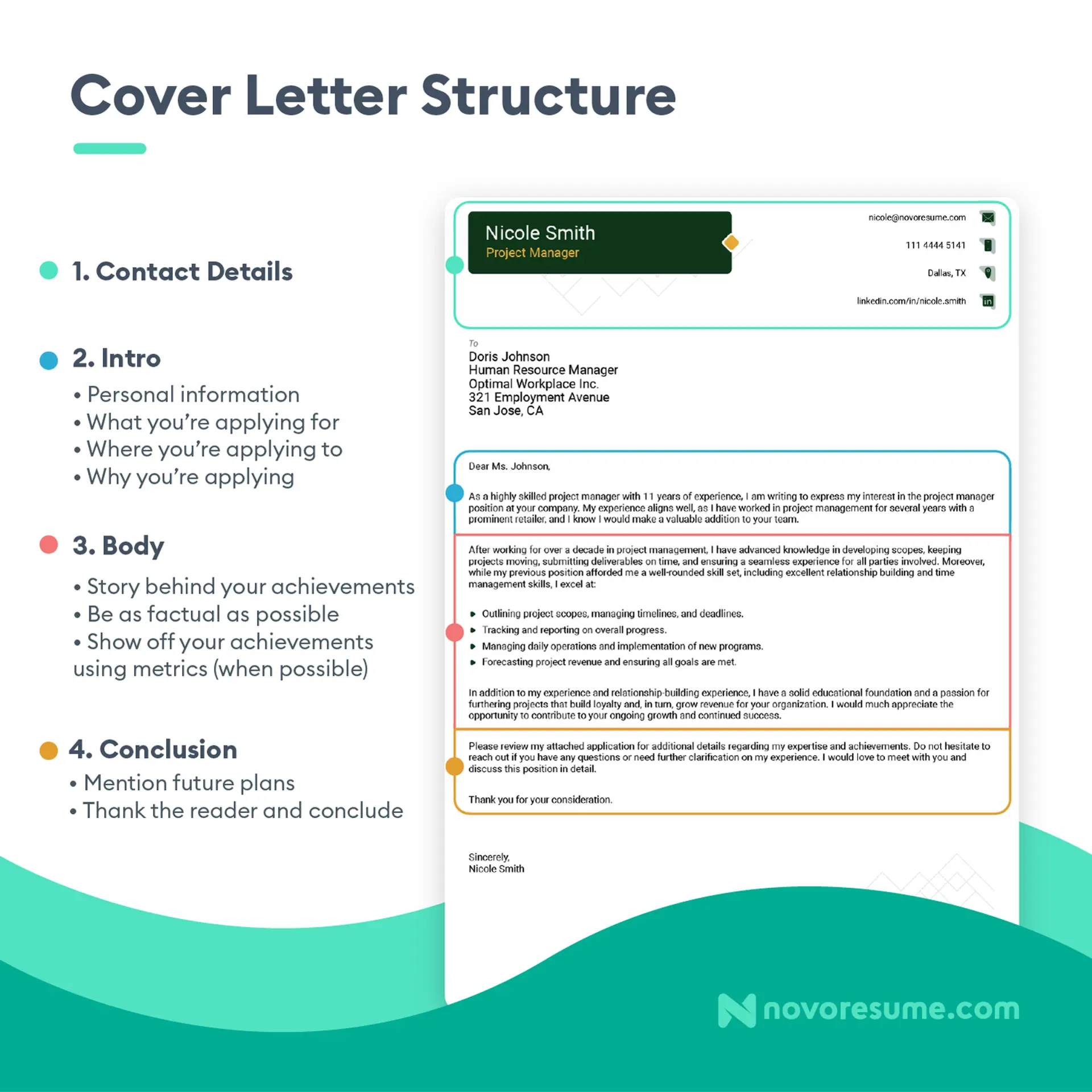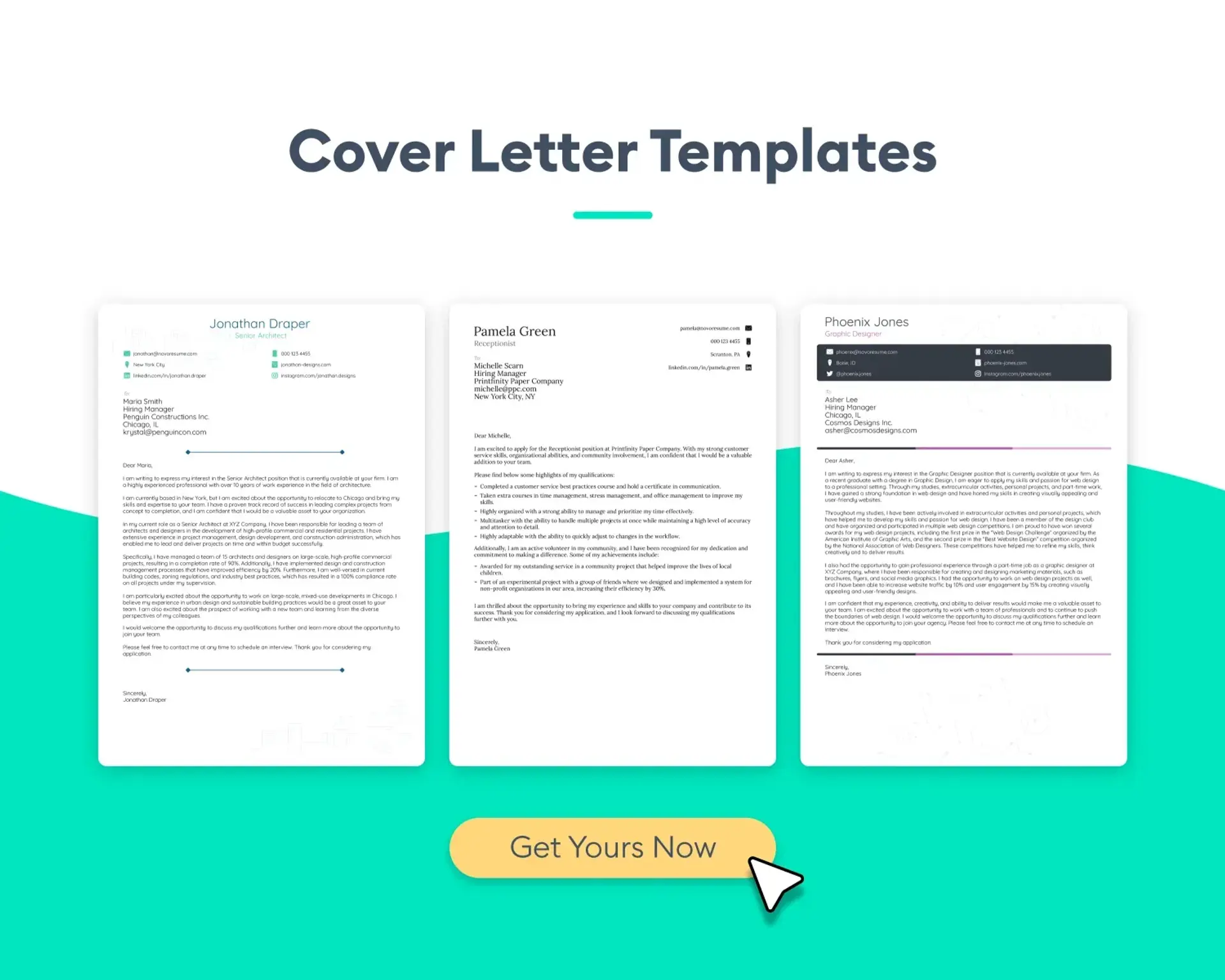
As a dental assistant, you’re the backbone of any dental practice, skilled in patient care and keeping the office running smoothly.
But let's face it, when it comes to penning down a cover letter, things can get a little sticky.
Writing about yourself feels weird, and you’re not entirely sure what can make a strong impression on the hiring manager.
Don't stress! We've got you covered.
This article is your go-to guide for creating a top-notch cover letter that'll get you noticed. Here's what we'll dive into:
- What a Great Dental Assistant Cover Letter Looks Like
- 5 Steps to Writing a Great Dental Assistant Cover Letter
- 3 Essential Cover Letter Tips for Dental Assistants
So, are you ready to level up your cover letter game?
Let's dive in!
Dental Assistant Cover Letter Example

5 Steps for the Perfect Dental Assistant Cover Letter
You've just seen a solid example of a cover letter that could land you that dental assistant job. Now it's your turn to write your own job-winning letter.
Just follow the steps we've laid out, and you'll nail it.
#1. Put Contact Information in the Header
Start your dental assistant cover letter by putting your contact details right at the top, just like you would on your resume.
Here's what to include:
- Full Name. Put your complete name at the top left corner of the page.
- Job Title. Be specific about the job title you're applying for. This helps the hiring manager, who is likely sorting through multiple applications for various roles.
- Email Address. Use a straightforward and professional email address. Skip the quirky ones you made back in the day. So, instead of "ToothFairy123@hotmail.com," go with "Jane.Smith@gmail.com."
- Phone Number. Double-check that your number is correct. If you're applying out of state or internationally, include the dialing code.
- Location. Usually, just your city and state are enough. If you're open to relocation, write that down too.
- Relevant Links (optional). Feel free to add links to important sites like your LinkedIn profile, if applicable.
Next up, add the company’s and hiring manager's contact information:
- Company Name. State the name of the correction facility or dental office you're applying to.
- Hiring Manager’s Name. Try to find out who the hiring manager is. This could be in the job ad or on the company's website.
- Location. Mention the city and state of the company. This is particularly crucial for large organizations with multiple locations.
- Date of Writing (optional). Adding the date you wrote the letter is a nice professional touch.
#2. Address the Hiring Manager
After you've added your contact details, it's time to address your cover letter the right way. And that means dropping the old ‘To Whom It May Concern.’
Your first job is to find out who will read your cover letter. Check out the job ad, the dental practice's website, or their LinkedIn page to find the name and email of the hiring manager for the dental assistant role. Most of the time, this will be the head dentist at the specific clinic.
Once you know who you're writing to, address them directly. A "Mr." or "Ms." followed by their last name usually does the trick. If you're not sure about their gender or marital status, using their full name is a safe bet. Like so:
Example Addressing Hiring Manager:
- Dear Mr. Smith,
- Dear Emily Smith,
If you draw a blank and can't find who the hiring manager is, it's okay to address your letter to the entire team:
Example Addressing Company:
- Dear Dental Team,
- Dear Hiring Team,
- Dear Head of Dental Services,
#3. Write an Eye-Catching Opening Statement
Hiring managers often spend just a few seconds scanning a resume before deciding to read it fully. The same applies to cover letters.
That's exactly why your opening statement matters.
Kick off with your name and why this role caught your eye. If you're genuinely interested in dental health or have a passion for the work, say it. It makes hiring managers want to learn more about you.
Doing your homework about the dental practice pays off too. The more you know, the better you can show that you'll fit their culture. This sends the message that you're not just applying anywhere, but you're keen on this particular job.
Most importantly, if you have prior achievements or specific skills the role is looking for, feel free to mention them upfront. But keep them brief. The goal is to spark the hiring manager's interest, so they'll read the rest of your dental assistant cover letter.
#4. Use the Cover Letter Body for the Details
The body of your dental assistant cover letter is your chance to delve into what sets you apart.
Avoid just echoing your resume, though; this is your space to truly shine professionally. Your main task here is to persuade the hiring manager that you're the most fitting candidate. So, in addition to highlighting any relevant achievements, explain exactly how you made them happen.
On top of that, tailor your content to the job ad by focusing on the skills the dental practice is seeking. For instance, if they need someone skilled in dental X-rays or patient care, zero in on your experience with those. Don't talk about general medical skills that aren't directly relevant to dental assistance.
Your knowledge of the specific dental practice can also work in your favor. If you're acquainted with the services they offer or the technology they use, mention it. This demonstrates you're not just a good skill match but also align well with their culture and mission. Just make sure you avoid cliches—they’re one of the biggest cover letter mistakes out there.
#5. Wrap It Up and Sign It
Closing your dental assistant cover letter the right way can be the finishing touch you need. You want to leave the hiring manager with a good final impression and re-confirm what you've stated throughout the letter.
In your conclusion, recap why you're an excellent match for the dental assistant role or summarize the unique skills that set you apart from other candidates.
After that, include a call to action. For example, invite the hiring manager to further discuss your application or to set up an interview; this adds a proactive touch that can set you apart as a candidate.
Then, sign off professionally. Use a closing line that suits your style, followed by your full name. For instance:
Signing Your Cover Letter:
Feel free to reach out to me via email or phone to set up an interview. I'm excited to dive deeper into my application with you soon.Kind regards,Jane Smith
If "Kind regards" feels too standard for you, other suitable options include:
- Sincerely,
- Respectfully,
- Thank you for considering my application,

3 Essential Dental Assistant Cover Letter Tips
Great, you're now all clued in on cover letters!
Next up, let's finesse yours with some essential cover letter tips geared specifically for dental assistants.
#1. Match Your Resume
Stepping into the world of dentistry?
Your cover letter should reflect the neatness you'd bring to a dental office. That’s why it's important that its look aligns with your resume; mismatching can seem a bit messy.
Line up your details on the page in a clean way and stick to one font style and size. And just as you'd organize tools for a dentist, keep those margins and the line spacing tidy, all while aiming for a cover letter that fits snugly on one page.
Or Use A Cover Letter Template Instead
Want to skip the hassle?
Use our free resume builder to create a flawless dental assistant resume and grab one of our matching cover letter templates to put your application together.
Made with global hiring pros, they're spot-on for any industry. You'll have a cover letter that pairs perfectly with your resume in no time.
Quality and ease, all into one.

#2. Mention Skills
Talking about your skills in your dental assistant cover letter is more than just a checklist. It's your chance to show why you're a great fit for the role.
When a hiring manager reads about your specific skills, it’s easier for them to understand what you can bring to the table.
But don't just throw in a list of random skills. Use them to build your case effectively by expanding on the most important ones.
For example, if you're certified to take dental X-rays, don't just say you have the certification. Explain how it allows you to contribute immediately to patient care and assist the dentist more efficiently. Tying your skills to your potential role makes you stand out, and doing it well sets you apart as a strong candidate for the job.
#3. Save It To The Right File Format
The final step, but far from the least important, is saving your cover letter in the right file format.
Saving your cover letter as a PDF file ensures that your carefully crafted formatting looks the same across any device or software the hiring manager uses to read it. In other words, your cover letter looks professional, no matter where it’s opened.
However, there's a catch. Always check the job ad, just in case they want a different file format. In some rare cases, you might see requests for formats like DOC or RTF, or another format supported by Microsoft Word.
But you should only do so if it’s specified in the ad. Otherwise, PDF is your go-to choice.
Key Takeaways
And that’s all there is to dental assistant cover letters!
We’re confident that you’ve got the hang of it now, and you’ll be on your way to flashing that winning smile in your next job.
But before we go, let’s list some key takeaways from our article:
- Match your cover letter to your resume so your entire application has a professional look. The easiest way to do this is by using an online resume builder and picking a matching cover letter template to go with it.
- Start your dental assistant cover letter by mentioning who you are and why you’re writing, then follow up with a significant skill or qualification that makes you stand out.
- Use the body of your cover letter to expand on why you’re a great candidate. This is the place to elaborate on your achievements and explain anything your resume didn’t allow for, such as an employment gap.
- Before submitting your application, check the contact information one last time. You don’t want to risk having a typo in your phone number or email address and missing the chance for an interview.
